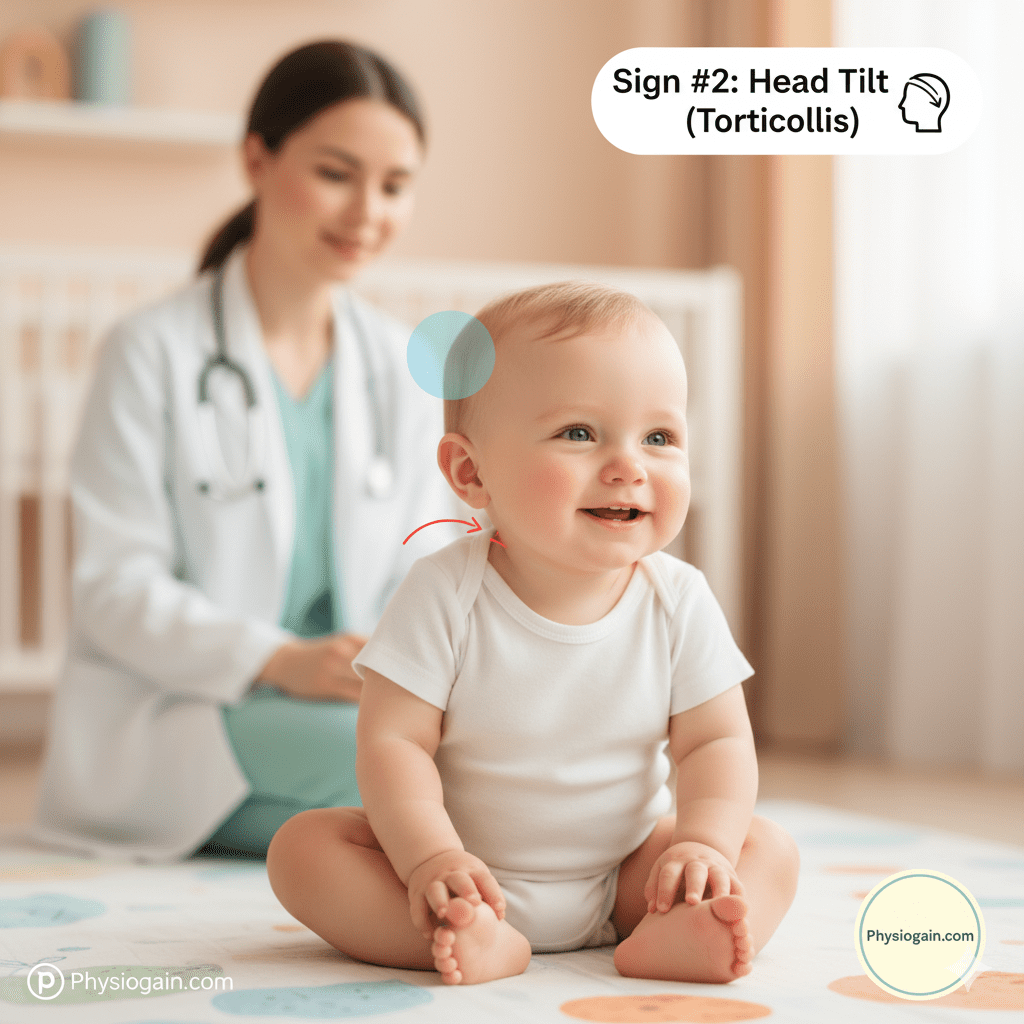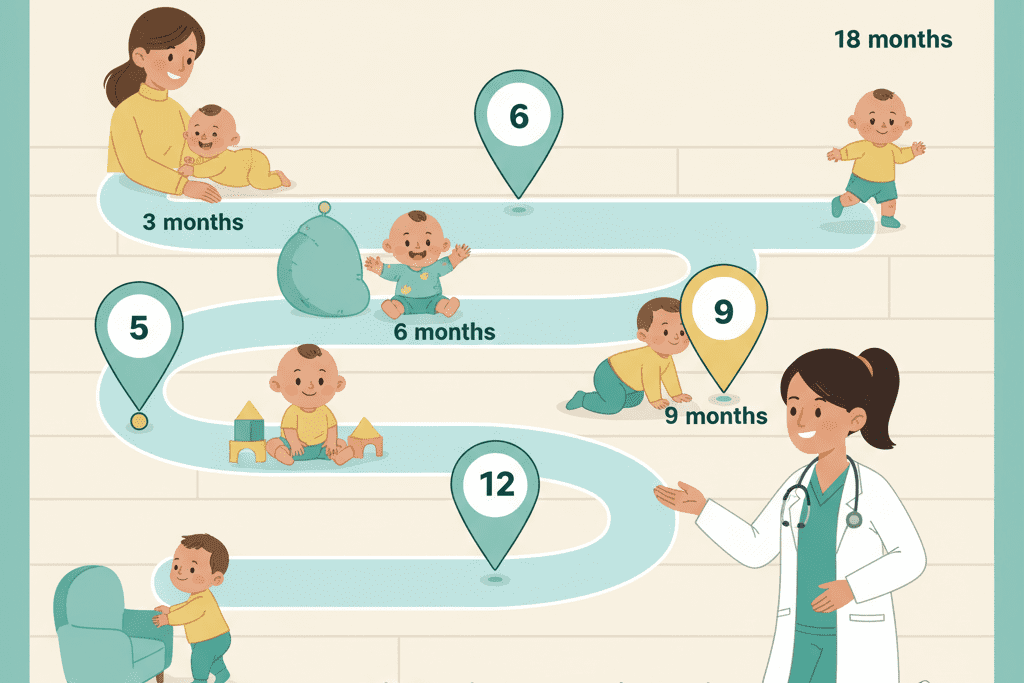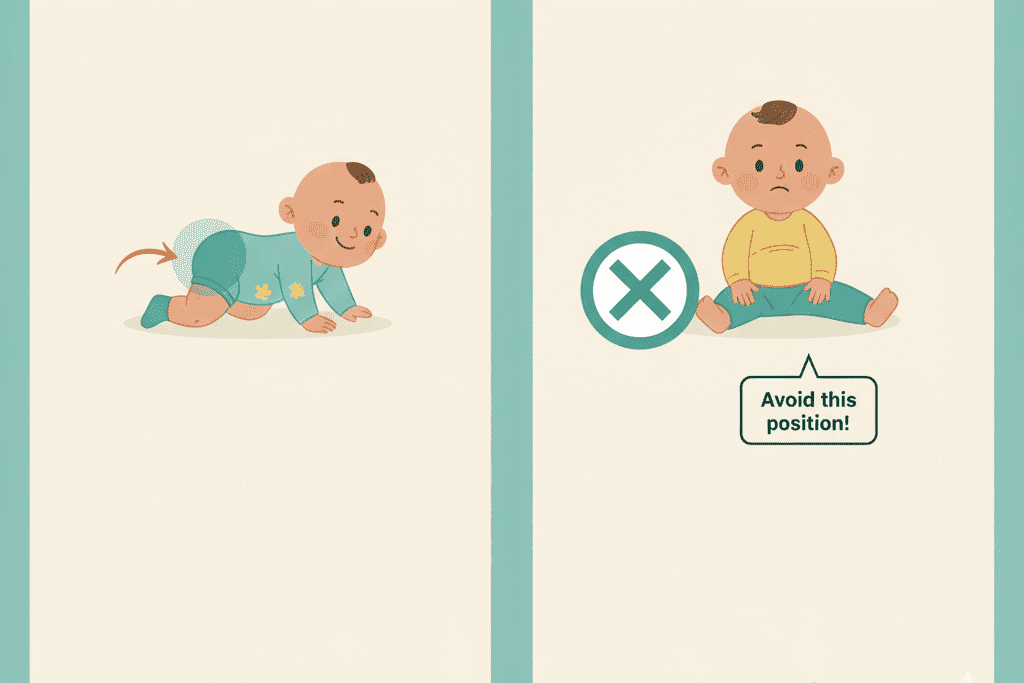As a parent, you become an expert observer.
You celebrate every new giggle, every clumsy clap, and every wobbly first step.
But sometimes, you watch your child play, and a quiet question pops into your head.
“Should they be doing that?”
Or maybe, “Why aren’t they doing this yet?”
That little voice of concern is a normal part of parenting. In a world of endless information, it’s easy to fall into the comparison trap, measuring your child’s journey against a rigid, unforgiving chart.
This guide is not here to make you worry.
It’s here to empower you.
We’ll walk you through common developmental signs that are worth paying attention to. We’ll also explain how gentle, play-based pediatric physiotherapy can make a world of difference in helping your child build strength, confidence, and coordination.
What Are Developmental Milestones (And Why They Aren’t a Race)
First, let’s take a deep breath and get one thing straight: developmental milestones are not a competition.
There is no prize for walking at 10 months or crawling at 6.
Think of milestones not as a rigid checklist, but as a flexible roadmap. Every child’s journey is unique, with its own pace and its own scenic routes.
Some babies are laser-focused on fine motor skills, like picking up a pea, long before they decide to roll over. Others are so busy trying to move that they skip crawling altogether and go straight to cruising furniture.
This variability is normal.
A pediatric physiotherapist acts as a helpful, friendly guide. If your child seems to be taking an unexpected detour or is struggling with a particular part of the map, we can offer support, identify roadblocks, and provide simple strategies to help them find their way forward.

7 Common Signs Your Child Might Benefit from Pediatric Physiotherapy
Observing your child is the most powerful tool you have. Your intuition is valuable. If you’ve noticed any of the following signs, it’s not a cause for panic, but a great reason to seek a supportive, expert opinion.
Sign #1: The Tummy Time Battle
What to look for: Your baby consistently cries, screams, or becomes very distressed during tummy time. They have significant trouble lifting their head even briefly by 3 months, or they aren’t beginning to push up on their forearms.
Why it matters: Tummy time is the single most important exercise for a baby. It’s the foundation for everything that comes next.
It builds the crucial neck, shoulder, back, and core muscles needed for rolling, sitting up, crawling, and eventually, pulling to stand. When a baby fights it, it’s often because they find it incredibly difficult, which can signal underlying tightness or weakness. Good tummy time tips from a physio can make all the difference.

Sign #2: A Strong Head Preference or Tilt (Torticollis)
What to look for: Your baby almost always tilts their head to one side. Or perhaps they only seem to look in one direction—for example, they’ll happily gaze to the right but fuss if you try to get their attention from the left.
You might also notice a flat spot developing on one side or the back of their head (plagiocephaly).
Why it matters: This is a classic sign of congenital muscular torticollis in babies. It simply means one of the neck muscles is tighter than the other, pulling the head into that tilted position.
It’s very common and very treatable! Early intervention with gentle stretches and positioning strategies is key to restoring full neck motion, which is vital for symmetrical development, feeding, and hitting future developmental milestones.

Sign #3: Delays in Key Mobility Milestones
What to look for: Milestones exist in a range, but there are some general timelines to keep in mind. Key signs to watch for are not rolling by 7 months, not sitting independently by 9 months, or not attempting some form of forward movement (like crawling, scooting, or bum-shuffling) by 12 months.
Why it matters: These major motor skills are powered by core strength, coordination, and balance.
A delay might indicate that your child needs a little extra help developing the foundational muscle groups to achieve these tasks. Pediatric physiotherapy can identify which muscles need strengthening and turn the necessary exercises into fun, engaging games.

Sign #4: A ‘Funny’ Crawl or Consistent ‘W-Sitting’
What to look for: Your child has a quirky crawl, like using three limbs and dragging one, or pulling themselves forward with just their arms (commando crawling) for a prolonged period.
Another common flag is “W-sitting,” where a toddler sits on their bottom with their knees bent and legs splayed out to the side, forming a ‘W’ shape.
Why it matters: While some creative movements are perfectly fine, a persistent, asymmetrical crawl can signal that one side of the body is weaker or less coordinated than the other.
Frequent W-sitting can be a concern because it puts stress on the hip and knee joints and can discourage the development of strong core and trunk muscles needed for more complex movements. This is a common area where physiotherapy for toddlers can provide simple, effective guidance.

Sign #5: Trouble with Walking or Balance
What to look for: Not walking independently by 18 months is a common reason parents seek advice. Other signs include consistent toe-walking (after the age of 2), frequent tripping or falling that seems unusual for their age, or a noticeable limp or uneven gait pattern.
Why it matters: Walking is a complex skill that requires strength, balance, and coordination.
A pediatric physiotherapist is an expert in analyzing gait patterns. We can assess your toddler’s leg strength, joint mobility, and balance systems to find the root cause of the issue and design a fun program to improve their confidence on their feet.
Sign #6: Low Muscle Tone (Hypotonia)
What to look for: Your baby or child feels “floppy” or “loose” when you pick them up. They might have poor head control for their age, feel less “solid” than other babies, or seem to struggle with tasks that require muscular effort, like pushing up or sitting.
Why it matters: Hypotonia, or low muscle tone, means there is less tension in the muscles when they are at rest. It can make it harder for a child to achieve stable positions and generate the force needed for movement.
The great news is that muscle strength can always be improved. Targeted pediatric physiotherapy helps build functional strength through fun, repetitive, and play-based activities.
Sign #7: Recovering From an Injury
What to look for: This is more straightforward. Your child has had an injury like a fracture, a serious sprain, or has undergone surgery.
Why it matters: Children are resilient, but they don’t always bounce back perfectly on their own.
After an injury, a child might favor one side, develop compensatory movement patterns, or lose confidence in their physical abilities. A physiotherapist ensures they not only heal but also regain full strength, mobility, and confidence to get back to playing safely.
Myth vs. Fact: Children’s Development Edition
Myth: “Baby walkers and jumpers help babies learn to walk faster.”
Fact: “Actually, they can delay independent walking! They often encourage toe-walking and don’t allow babies to learn the crucial balance and coordination skills that come from feeling the floor. The best thing for a baby’s development is free time on a safe floor space.”
What Does a Pediatric Physiotherapy Session Actually Look Like?
If you’re picturing a sterile, intimidating clinic, think again.
Pediatric physiotherapy is play with a purpose.
Imagine a session where your child is laughing while crawling through a colorful tunnel to build core strength.
Picture them reaching for bubbles to improve their balance, or playing with oversized therapy balls to work on their coordination.
We meet your child at their level. We use their natural curiosity and desire to play to help them build skills. It’s a fun, positive, and encouraging environment where your child is the star of the show. Our job is to make “therapy” feel like the best playtime of their week.
Your Child’s Journey is Unique, and You’re the Perfect Guide
Observing these signs isn’t a reason to panic—it’s a reason to take proactive, loving action.
Early support can make a profound difference in a child’s physical journey, giving them the strong foundation they need to run, jump, and explore the world with absolute confidence.
You are your child’s greatest advocate. Trusting your instincts and seeking guidance when you feel it’s needed is a sign of incredible parenting.
Disclaimer: The information in this article is for educational purposes only and is not intended to be a substitute for professional medical advice, diagnosis, or treatment. Always seek the advice of a qualified healthcare provider with any questions you may have regarding a medical condition.
Your Turn to Share!
If any of these signs resonate with you, or if you simply have that parent’s intuition that something could be better, we are here to help. Schedule a compassionate and comprehensive pediatric physiotherapy assessment at physiogain.com. Let’s work together to help your child thrive.
What’s one milestone you found most exciting to watch your child achieve? Share the joy in the comments below!